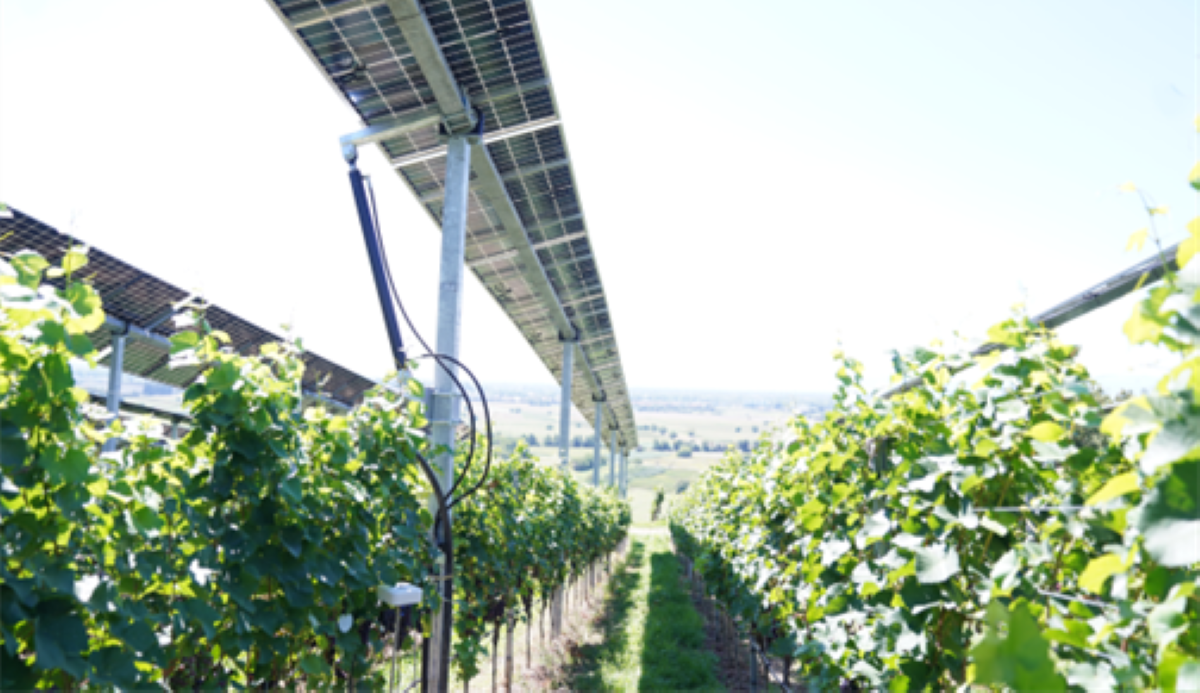German electronics manufacturer SICK is demonstrating how its inertial sensor technology, typically used to measure inclination and rotational movement in large solar parks based on tracker systems, can be applied to agrivoltaics.
The TMS22 sensors are integrated into a single-axis overhead PV system installed in a vineyard in Germany as a part of a 200 kW multi-year project called Weinbau 4.0, which includes studying the PV performance and the effects of the solar modules on grape growth.
The project partners are Intech Clean Energy, a German off-grid PV systems specialist, plus two German farming equipment suppliers TYOE ZG Raiffeisen Technik and BRAUN Maschinenbau, along with the State Institute of Viticulture Freiburg, and the Business Development Cooperation of the District of Emmendingen.
“The TMx22 sensors have been on the market since 2021. Since then, more than 10,000 TMx22 sensors have been used by various tracker manufacturers, especially in Europe,” SICK inertial sensor product manager Clemens Merkle told pv magazine.
The TMx22 inclination sensors can be used in a system set up to follow the sun or to follow a stored logic based on farming-related weather data that could be used to influence the panel positions after rainfall. For example, the module can be moved into a vertical position to allow crop leaves to dry more quickly and avoid fungal growth, for example.
“In the near future, the number of sensors in use will most likely increase significantly,” added Merkle, noting opportunities to apply the technology in vineyards, fruit and vegetable plantations, or pastures.
SICK’s inclination measurement sensors for PV applications come in two variations. The TMS22, used in single-axis tracking, and TMM22, used in dual-axis tracking, with measuring ranges of 360 degrees and 90 degrees, respectively.
Both models measure 38.8 mm x 30 mm x 10.4 mm and have an error tolerance of about 0.1 degree. They are micro-electromechanical (MEMS) sensors embedded in an injection-molded, hermetically sealed enclosure compliant with IP66 through IP69K standards. The analog interfaces range from 0 V to 10 V and 4 mA to 20 mA. The operating temperature between -40 C and 80 C.
SICK sensors were used in other parts of the Weinbau 4.0 project, including environmental, weather and climate sensors, as well as intelligent image sensors. For example, a 3D LiDAR sensor enables navigation in a semi-autonomous tractor, along with an inclination sensor to measure its orientation.
This content is protected by copyright and may not be reused. If you want to cooperate with us and would like to reuse some of our content, please contact: editors@pv-magazine.com.



By submitting this form you agree to pv magazine using your data for the purposes of publishing your comment.
Your personal data will only be disclosed or otherwise transmitted to third parties for the purposes of spam filtering or if this is necessary for technical maintenance of the website. Any other transfer to third parties will not take place unless this is justified on the basis of applicable data protection regulations or if pv magazine is legally obliged to do so.
You may revoke this consent at any time with effect for the future, in which case your personal data will be deleted immediately. Otherwise, your data will be deleted if pv magazine has processed your request or the purpose of data storage is fulfilled.
Further information on data privacy can be found in our Data Protection Policy.